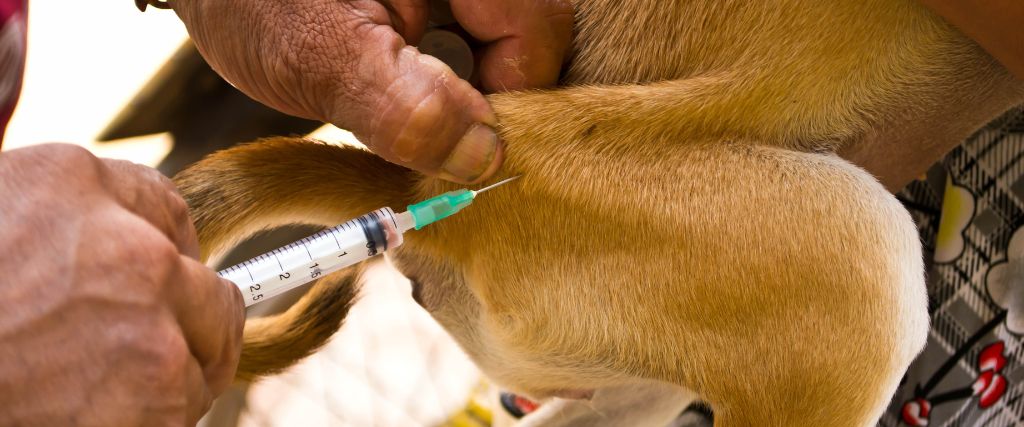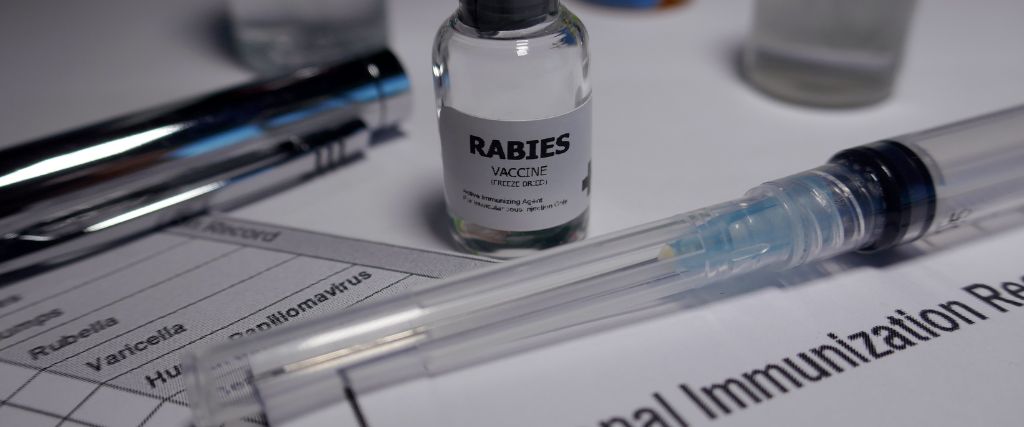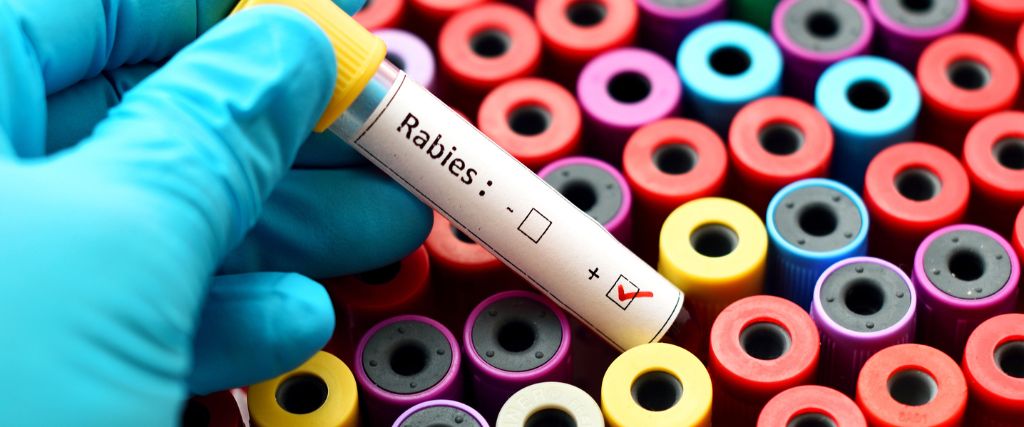National World Rabies Day occurs every year on September 28th and is a vital tool in helping educate the public about the dangers of this deadly disease. The more you are able to learn about rabies and rabies prevention, the better you can protect yourself, your family, and your pets from being exposed. This blog explains rabies, the clinical signs that occur, the available treatment for Rabies, and prevention against Rabies.
What is Rabies?
Rabies disease is a dangerous virus carried in the saliva of infected mammals. Most all cases of rabies transmission occur through bites. Rabie can, however, also be transmitted if the saliva gets into an open wound or via the mouth or eyes. Ninety-nine percent of rabies cases are from dog bites of dogs carrying the disease. Dog bites and dog bites from rabid dogs are most common in lower- to middle-income countries where there are high numbers of stray dogs. In the United States (US), the most common animals that spread the rabies virus are raccoons, coyotes, bats, skunks, and foxes. These animals normally spread the disease to household pets, and thankfully fewer than three people in the US are infected with Rabies annually.

There are are a number of forms of Rabies Disease
Two forms of rabies are described as furious or paralytic. These two forms are described below.
Furious and Paralytic. The furious form is the type more commonly associated with Rabies disease. This is characterized by psychosis, hallucinations, irrational actions, fear of light and water, and hyperactivity. The other type, paralytic Rabies, is almost the exact opposite. This is characterized by lethargy, neurologic slowness, paralysis, and even comas.
Different Stages of Rabies
Rabies has several distinct stages of infection:
- Incubation Period: The incubation period is the time just after the virus is in the body and before symptoms begin. It can take anywhere from one week to one year for clinical signs or symptoms to occur, depending on how fast the virus moves from the body to the brain. The speed of travel of the virus reaching the brain depends on where on the body a bite occurs. This stage is where treatment is possible if administered early.
- Prodromal phase: This stage occurs when mild clinical signs or symptoms begin. Symptoms include fever, sore throat, cough, nausea, headache, sore joints, and general flu-like symptoms.
- Acute Neurologic Period: The neurologic phase occurs when the virus has reached the area of the brain where it becomes activated and causes more aggressive clinical signs or symptoms such as convulsions, muscle spasms, confusion, aggression, foaming at the mouth, and the other obvious signs associated with Rabies.
At the end of the progression, Rabies leads to coma and death.
Treatment for Rabies... Kind Of
There is no treatment for Rabies after clinical signs or symptoms occur. If someone, pet or person, is bitten by an animal that is either confirmed to have rabies or suspicious of possibly being rabid, they need to seek immediate medical attention for them or their pets to have the best chance of stopping progression of the virus and continuation of the clinical signs. To minimize the number of viral particles entering the bloodstream, it is recommended to wash out the bite/open wound with soapy, antibacterial water for 15 minutes. Then the individual that was bitten MUST seek medical attention. Treatment of Rabies before symptoms occur is possible by giving a series of injections immediately after exposure. If symptoms occur it is normally too late to expect effective treatment. Very few people have survived rabies, and if infected, healthcare professionals will do everything they can to make the infected individual comfortable.
But why is there no treatment for Rabies? Well, this answer from Cleveland Clinic sums it up perfectly! In their article titled “Rabies: Causes, Symptoms, Treatment & Prevention,” they explain the following: “There’s no cure for rabies once it travels to your brain because the virus will be protected by the brain-blood barrier. The blood-brain barrier is a layer between the brain and the blood vessels in the head. The blood-brain barrier protects the brain by keeping toxins and other dangerous substances from getting into the brain and circulating blood. This barrier resembles a very fine strainer. Researchers are not sure how, but rabies locks this barrier down even further, so medications that might destroy the virus is unable to get through.”

Rabies Prevention
So how can you protect yourself and your pet from Rabies? The answer is simple: Vaccination Prevention. Only some humans qualify for the pre-exposure vaccination. Individuals that may be more likely to be exposed to Rabies, such as wildlife workers, rangers, veterinarians, and others, are given Rabies prophylaxis vaccinations. As stated previously, the most common way for an individual to be exposed to Rabies is by being exposed, via a bite, to a wild animal infecting a household pet.
To prevent the spread of Rabies keep your pet current on their Rabies vaccination and schedule regular visits with your veterinarian. Furthermore, keep an eye on them when they are outside. A cat is much less likely to be bitten by a rabies-infected animal if they are safely in your home cuddled up on their cat bed. Spaying and neutering all pets is also important because if your unneutered pet gets outside and is able to breed with another unneutered stray, that pet will have babies and those babies will likely be unvaccinated, and susceptible to being exposed to Rabies.
The More You Know
Rabies is a frightening disease, but the good news is that it is highly preventable. If you or your four-legged family member ever experience a bite from an animal and you do not know if that animal is vaccinated, or if it is a bite from a wildlife species, do not hesitate—seek medical attention immediately. Seek medical care no matter the vaccination status of the animal involved. And keep in mind the idea of the power of prevention: keeping your pet's vaccinations current, especially for Rabies, can make all the difference in preventing Rabies exposure. So be proactive and give our pets the protection they deserve!
This blog was first seen on Family Pet Veterinary Center/a>.

